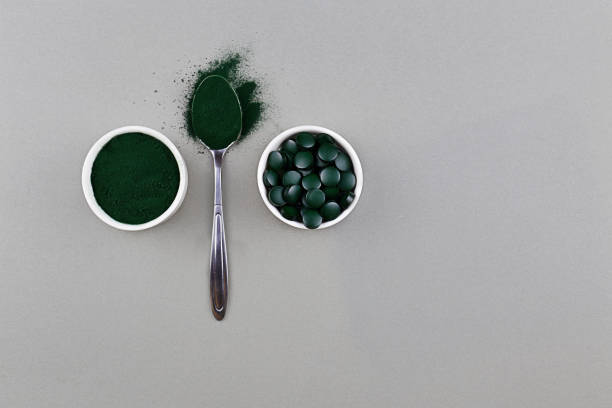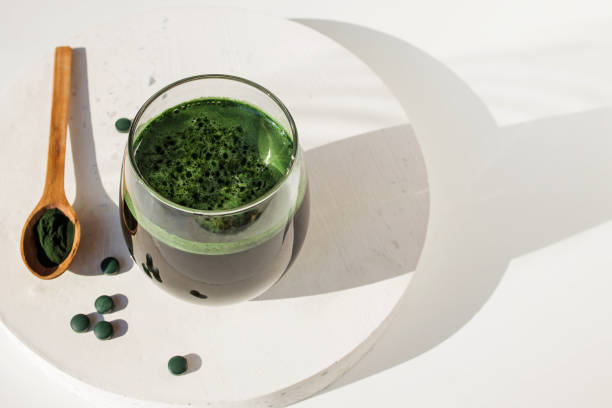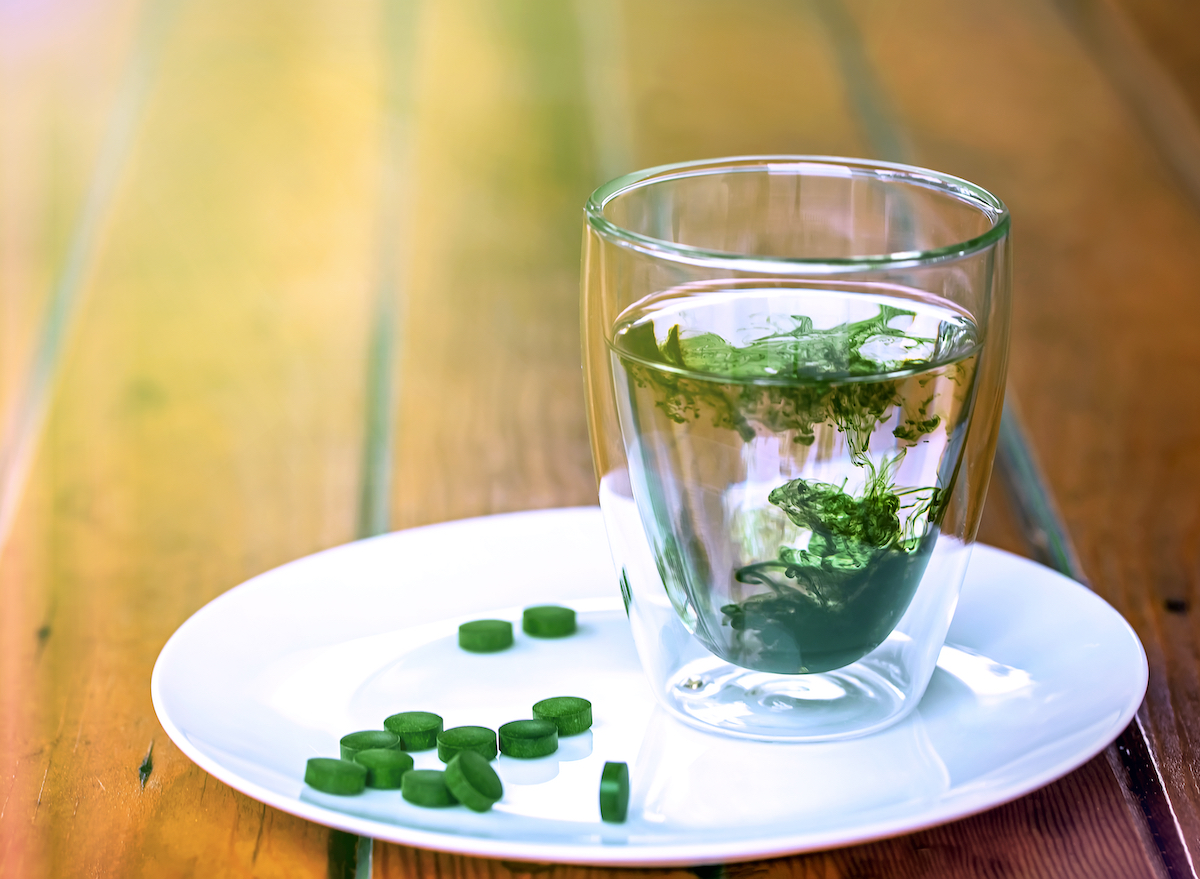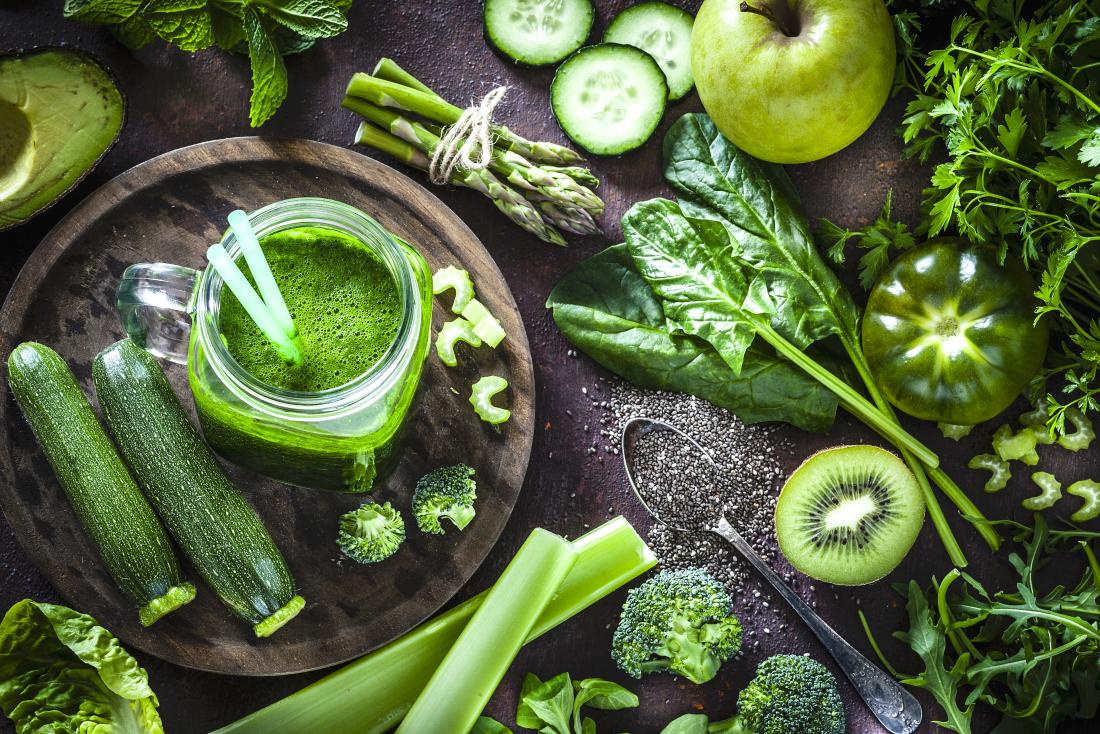Health Benefits of Chlorophyll
Chlorophyll is a green pigment found in plants that is essential to photosynthesis. From its ability to support detoxification and promote glowing skin to its antioxidant-rich properties, this plant pigment is more than just a pretty shade of green.
This blog will discuss how chlorophyll can help promote healthy blood sugar levels, boost your immune system, and even help prevent cancer. We will also discuss how you can add chlorophyll to your daily routine through supplements or by adding it to your diet.

What Is Chlorophyll?
Chlorophyll is a green pigment found in plants that plays a crucial role in photosynthesis, the process by which plants convert sunlight into energy. It absorbs light from the sun and uses it to synthesize carbohydrates from carbon dioxide and water. This process provides energy for the plant and releases oxygen into the atmosphere.
Let’s understand more about it:
1. The molecular structure of chlorophyll is similar to hemoglobin in human blood, except that it contains magnesium instead of iron at its core. This similarity has led some people to call chlorophyll “plant blood.”
2. In addition to giving plants their green color, potential chlorophyll benefits have been studied for its effects when consumed by humans. Its antioxidant properties may help protect cells from damage caused by free radicals and promote overall well-being.
3.There are six types of chlorophyll: chlorophyll a, b, c, d, e, and f. Their chemical structure, absorption spectrum, and distribution among photosynthetic organisms differ.
4. Interestingly, synthetic chlorophyll has an E number of E140 and is registered as a food additive colorant. Many chefs use chlorophyll to give a green color to different foods and beverages, such as pasta and spirits.
Some sources of dietary chlorophyll include leafy green vegetables like spinach, kale, and parsley. Chlorophyll supplements can also be available in various forms, such as liquid drops or capsules, for easy consumption.

Why Do People Take Chlorophyll?
People take chlorophyll for various reasons, such as improving their health, preventing bad breath, and enhancing their appearance. However, the scientific evidence for these benefits is limited or lacking. Here are some of the possible reasons why people take chlorophyll:
1. Health: Some people believe that chlorophyll can detoxify the body, boost the immune system, increase red blood cells, and prevent or treat cancer. It can lead to an increase in hemoglobin, the protein that carries oxygen in the blood.
However, there is no conclusive proof that chlorophyll can have these effects in humans. Most of the studies on chlorophyll and health have been done in test tubes or animals, and the results are not consistent or applicable to humans.
2. Bad Breath: One of the chlorophyll benefits is reducing or eliminating bad breath, body odor, and fecal odor. This is based on the idea that chlorophyll can deodorize the body by neutralizing the odor-causing compounds in the mouth and intestines.
However, the evidence for this is weak and outdated. Most of the studies on chlorophyll and odor were done in the 1950s and 1960s, and they had methodological flaws or did not use chlorophyll alone. More recent and rigorous studies are needed to confirm the effectiveness of chlorophyll for bad breath.
3. Appearance: Some people use chlorophyll as a food for healthy skin and also to improve their hair and nails. This is based on the idea that chlorophyll can promote wound healing, fight acne, and protect the skin from sun damage. However, the evidence for this is also inconclusive.
Most of the studies on chlorophyll and appearance have used topical products, such as creams or gels, rather than oral supplements. The effects of chlorophyll on the skin may depend on the product’s type, concentration, and formulation, as well as the individual’s skin type and condition.

Health Benefits Of Chlorophyll
1. Promotes Blood Cell Production: Chlorophyll has a similar structure to human blood cells, and it contains magnesium at its core. This composition makes it an excellent blood builder and blood purifier.
2. Fights Bad Breath And Body Odor: Chlorophyll has natural deodorizing properties that can help to eliminate bad breath and body odor.
3. Detoxifies The Body: Chlorophyll can help to remove toxins from the body by binding to heavy metals and other harmful substances and enhancing their excretion.
4. Boosts The Immune System: Chlorophyll has anti-inflammatory and antioxidant properties. It is an immunity-boosting food that can protect you against disease.
5. Improves Digestion: Chlorophyll can help to improve digestion by promoting the growth of healthy gut bacteria and reducing inflammation in the digestive system. It can also help to relieve constipation and other digestive issues.
6. Supports Healthy Weight Loss: Chlorophyll can help promote weight loss by reducing cravings, increasing metabolism, and improving digestion. It can help regulate normal sugar levels and reduce insulin resistance, which can contribute to weight gain.

What Are The Side Effects Of Chlorophyll?
Regarding the chlorophyll side effects, it’s important to note that while rare, some individuals may experience certain issues. These are:
1. Yellow Or Black Tongue: This may happen because chlorophyll or chlorophyllin can stain the tongue with a yellow or black color. This is usually harmless and temporary, and you can remove it by brushing the tongue or rinsing the mouth.
2. Green Urine Or Stool: This may happen because chlorophyll or chlorophyllin can change the color of the urine or stool to green. This is also harmless and temporary, indicating no health problems.
3. Skin Irritation: This may happen when chlorophyll or chlorophyllin is applied to the skin, such as on a wound or a rash. Some people may have a common food allergy or sensitivity to chlorophyll or chlorophyllin, which can cause itching, burning, or redness.
4. Abdominal Pain: It results when chlorophyll or chlorophyllin is taken by mouth, especially in high doses or on an empty stomach. Some people may experience stomach discomfort, cramps, or nausea after taking chlorophyll or chlorophyllin supplements.
5. Loose Stool (poop): This may happen when chlorophyll or chlorophyllin is taken by mouth, especially in high doses or for a long time. Some people may experience diarrhea or loose bowel movements after taking chlorophyll or chlorophyllin supplements.

Amounts And Dosage Of Chlorophyll
Chlorophyll is a green pigment found in plants that helps them perform photosynthesis. Chlorophyll may also have some health benefits for humans, such as fighting cancer, improving liver function, speeding up wound healing, and boosting energy.
However, there is no official recommended amount of chlorophyll to ingest daily, as the research on its effects in humans is limited and inconclusive.
Some sources suggest that eating at least four servings of green vegetables per day can provide adequate amounts of chlorophyll, as these foods are naturally rich in this pigment.
Some examples of leafy green vegetables that contain high amounts of chlorophyll benefits are spinach, arugula, broccoli, green beans, and peas.
Remember that individual needs may vary based on age, weight, overall health status, and specific health goals. You can make the most of chlorophyll’s benefits safely and effectively by paying attention to how your body responds and staying informed about proper dosing practices.

Sources of Chlorophyll
A variety of plant-based foods contain chlorophyll, particularly leafy green vegetables. The table below reviews the chlorophyll content from some of the best dietary sources.
|
Food |
Chlorophyll Content (mg/kg) |
|
Spinach |
24 |
|
Kale |
11.4 |
|
Broccoli |
10.1 |
|
Parsley |
10.7 |
|
Wheatgrass |
52.8 |
|
Spirulina |
73.3 |
|
Cucumbers |
0.2 |
|
Green beans |
3.1 |
|
Asparagus |
25.2 |
|
Leeks |
5.1 |
|
Brussels sprouts |
6.1 |
|
Peas |
3.2 |
|
Kiwi |
5.4 |
|
Green grapes |
2.9 |

Conclusion
Chlorophyll is a plant pigment linked to several potential health benefits, including antioxidant properties, weight loss, wound healing, and more. While present in various plant-based foods, some people may supplement their intake with chlorophyll supplements.
For safety, consider the potential risks and side effects of chlorophyll consumption and consult your healthcare professional before starting any supplement. Chlorophyll-rich foods, like leafy green vegetables, are necessary to round out a balanced diet, and consuming them is the best way to ensure you are getting enough chlorophyll for overall health.
Including chlorophyll in your daily routine can offer many health benefits that may surprise you. From detoxifying the body, promoting weight loss, boosting energy levels, and improving skin health, chlorophyll is a powerhouse nutrient.
References:
Kilmarx, P. H., van de Wijgert, J. H., Chaikummao, S., Jones, H. E., Limpakarnjanarat, K., Friedland, B. A., Karon, J. M., Manopaiboon, C., Srivirojana, N., Yanpaisarn, S., Supawitkul, S., Young, N. L., Mock, P. A., Blanchard, K., and Mastro, T. D. Safety and acceptability of the candidate microbicide Carraguard in Thai Women: findings from a Phase II Clinical Trial. J Acquir.Immune.Defic.Syndr. 11-1-2006;43(3):327-334. View abstract.
Maguire, R. A., Bergman, N., and Phillips, D. M. Comparison of microbicides for efficacy in protecting mice against vaginal challenge with herpes simplex virus type 2, cytotoxicity, antibacterial properties, and sperm immobilization. Sex Transm.Dis. 2001;28(5):259-265. View abstract.
Ogino, M., Majima, M., Kawamura, M., Hatanaka, K., Saito, M., Harada, Y., and Katori, M. Increased migration of neutrophils to granulocyte-colony stimulating factor in rat carrageenin-induced pleurisy: roles of complement, bradykinin, and inducible cyclooxygenase-2. Inflamm.Res. 1996;45(7):335-346. View abstract.
Panlasigui, L. N., Baello, O. Q., Dimatangal, J. M., and Dumelod, B. D. Blood cholesterol and lipid-lowering effects of carrageenan on human volunteers. Asia Pac.J.Clin.Nutr. 2003;12(2):209-214. View abstract.
Perotti, M. E., Pirovano, A., and Phillips, D. M. Carrageenan formulation prevents macrophage trafficking from vagina: implications for microbicide development. Biol.Reprod. 2003;69(3):933-939. View abstract.
Tobacman, J. K. Review of harmful gastrointestinal effects of carrageenan in animal experiments. Environ.Health Perspect. 2001;109(10):983-994. View abstract.

